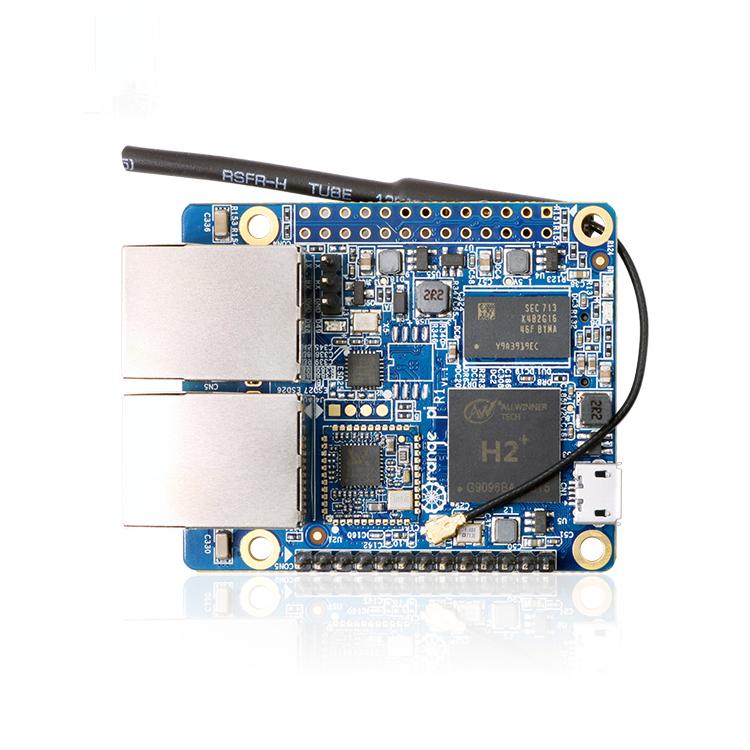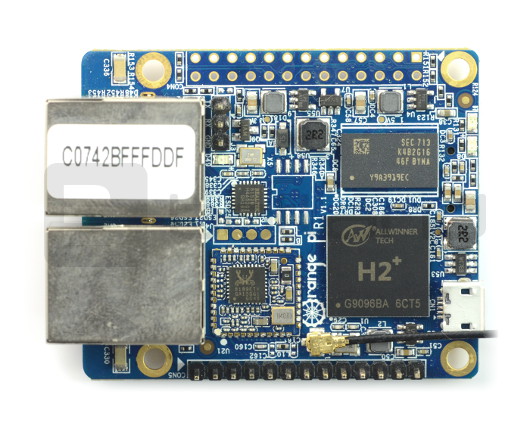Description:
This New Orange Pi board is an open-source single-board computer, which can run Android 4.4, Ubuntu, Debian. It uses the AllWinner H5 SoC, and has 256MB DDR3 SDRAM. With this board you can build anything from a computer, wireless servers, games, music and sounds, HD videos, speakers, Android, Scratch, and pretty much anything else you want because Orange Pi R1 is open source. So if you want to start creating with technology – not just consuming it, Orange Pi is the way to go. It’s a simple, fun, useful tool that you can use to start taking control of the world around you.
Quick Specifications:
- CPU: H2 Quad-core 32-bit Cortex-A7
- GPU: Mali400MP2 GPU @600MHz, Supports OpenGL ES 2.0
- Memory (SDRAM): 256MB DDR3 (shared with GPU)
- Onboard Storage: TF card (Max. 32GB) / Spi flash(16MB)
- Wifi Antenne: Yes
- Onboard WIFI: Realtek RTL8189FTV, IEEE 802.11 b/g/n
- Onboard Network:
- 100M/10M Ethernet RJ45(Onboard Ethernet)
- 100M/10M Ethernet RJ45(RTL8152B)
- Audio Input: No
- Video Outputs: Supports external board via 13pins
- Power Source: USB OTG can supply power
- GPIO(1×3) pin: UART, ground
- Buttons: Power Button(SW602)
- Low-level peripherals:
- 26 Pins Header, compatible with Raspberry Pi B+
- 13 Pins Header, with 2x USB, IR pin, AUDIO(MIC, AV)
- LED: Power led & Status led
- Supported OS: Android4.4, Lubuntu, Debian, Armbian Image
Board Layout:

Communication
Orange Pi has basic communication interfaces that can be found in PC class office computers. In addition to the aforementioned audio and video connectors, you have at your disposal:
- one microUSB OTG socket, to which you can connect eg. mouse, keyboard, WiFi card or pendrive. If it turns out that the sockets are not enough, you can increase their number using an external USB HUB .
- WiFi module – RTL8189FTV , for wireless communication in the IEEE 802.11 b / g / n standard
- 2 Ethernet ports , i.e. the possibility of direct connection to the LAN.
- GPIO x 26 pin + 13 pin connector – general purpose / output, which can be used to operate LEDs, buttons, motor controllers. Among them there are pins that support interfaces: I2C, SPI and UART.
- microSD slot – microSD card slot on which the operating system can be installed.
- power button
Power
As a power source, the system uses a microUSB connector. The manufacturer recommends that the voltage specified on the connector should be 5.0 V, while the current efficiency of the used power supp






















Reviews
There are no reviews yet.